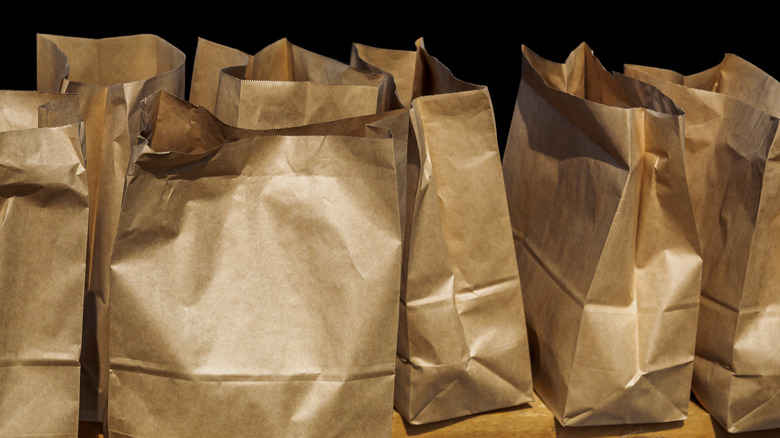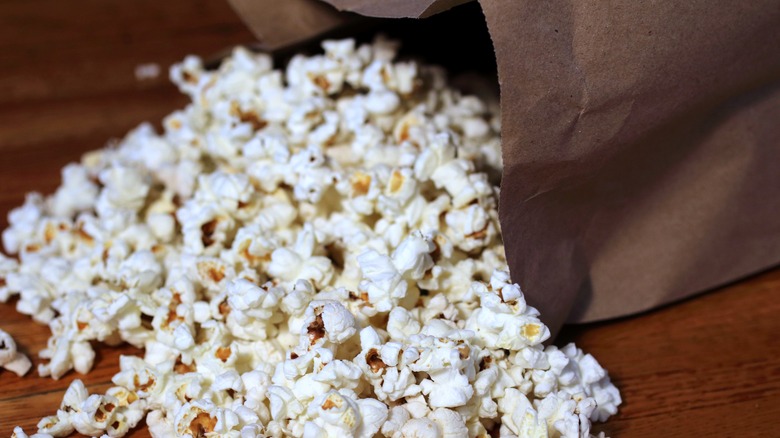This Is What Happens When You Put Paper Bags In The Microwave
Paper bags have been around forever, and if you're like most people, you them use for just about anything from packing lunches to storing leftovers. The first brown paper bag was invented in the early 1850s. Twenty years later, Margaret Knight invented a machine that mass-produced them, according to the Museum of Modern Art. Surprisingly, the look of the standard brown paper bag and how we use them has not changed much.
Nowadays, you can find a variety of paper bags ranging in color and size. Most are made from paper that comes from processing wood chips. The resulting pulp is separated into cellulose, lignin (a type of glue), and other compounds. After the pulp is cleaned, water is removed from the fiber, which is then flattened into a sheet and dried. Depending on what type of bag being made, it could go through several processes before finally being glued and folded together (via the American Forest & Paper Association).
Microwaving paper bags is not recommended
While paper bags seem harmless enough, you shouldn't heat them up in a microwave. You might have tossed one in a microwave to warm up the remains of an unfinished sandwich thinking it was okay. You might have even made microwave popcorn in a paper bag without giving it a second thought. However, according to the U.S. Food Safety and Inspection Service, this is not safe.
One of the problems with paper bags has to do with how they are made. Some smaller bags made from one layer of paper are not constructed to withstand a lot of heat, and can catch fire if left in the microwave for too long. In addition, when any type of paper bag is warmed up, it releases toxic chemicals and bacteria, which could make their way onto your food, per Today. Furthermore, some paper bags have ink on them which could also release harmful fumes, as noted by the College of Agricultural, Consumer, and Environmental Sciences.

